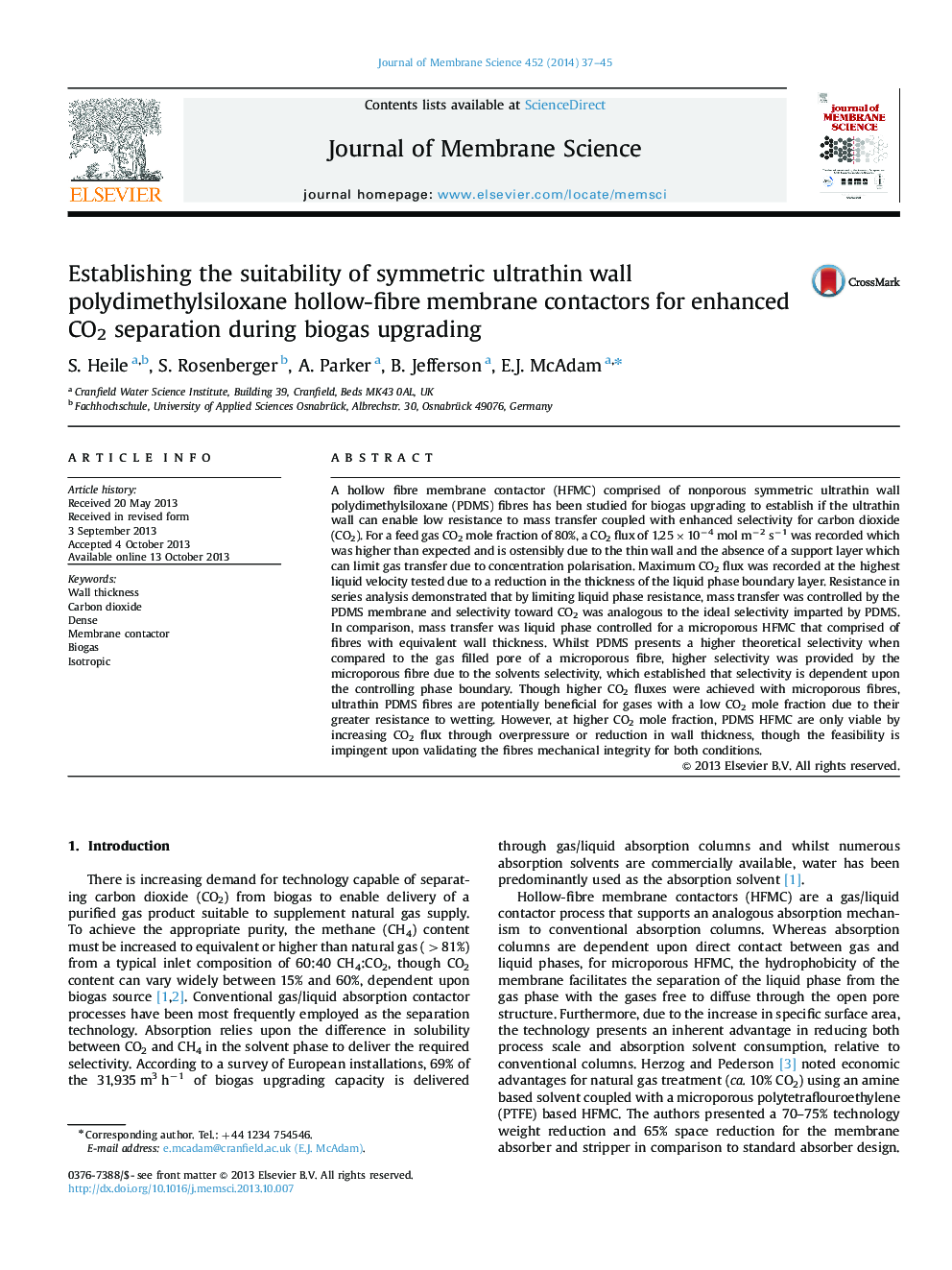| کد مقاله | کد نشریه | سال انتشار | مقاله انگلیسی | نسخه تمام متن |
|---|---|---|---|---|
| 633689 | 1456047 | 2014 | 9 صفحه PDF | دانلود رایگان |

• Ultrathin wall PDMS hollow fibre membrane contactor for biogas separation is studied.
• Selectivity exhibited by contactors is governed by the controlling phase.
• Ultrathin wall PDMS fibres are potentially viable for low CO2 mole fraction gases.
A hollow fibre membrane contactor (HFMC) comprised of nonporous symmetric ultrathin wall polydimethylsiloxane (PDMS) fibres has been studied for biogas upgrading to establish if the ultrathin wall can enable low resistance to mass transfer coupled with enhanced selectivity for carbon dioxide (CO2). For a feed gas CO2 mole fraction of 80%, a CO2 flux of 1.25×10−4 mol m−2 s−1 was recorded which was higher than expected and is ostensibly due to the thin wall and the absence of a support layer which can limit gas transfer due to concentration polarisation. Maximum CO2 flux was recorded at the highest liquid velocity tested due to a reduction in the thickness of the liquid phase boundary layer. Resistance in series analysis demonstrated that by limiting liquid phase resistance, mass transfer was controlled by the PDMS membrane and selectivity toward CO2 was analogous to the ideal selectivity imparted by PDMS. In comparison, mass transfer was liquid phase controlled for a microporous HFMC that comprised of fibres with equivalent wall thickness. Whilst PDMS presents a higher theoretical selectivity when compared to the gas filled pore of a microporous fibre, higher selectivity was provided by the microporous fibre due to the solvents selectivity, which established that selectivity is dependent upon the controlling phase boundary. Though higher CO2 fluxes were achieved with microporous fibres, ultrathin PDMS fibres are potentially beneficial for gases with a low CO2 mole fraction due to their greater resistance to wetting. However, at higher CO2 mole fraction, PDMS HFMC are only viable by increasing CO2 flux through overpressure or reduction in wall thickness, though the feasibility is impingent upon validating the fibres mechanical integrity for both conditions.
Journal: Journal of Membrane Science - Volume 452, 15 February 2014, Pages 37–45